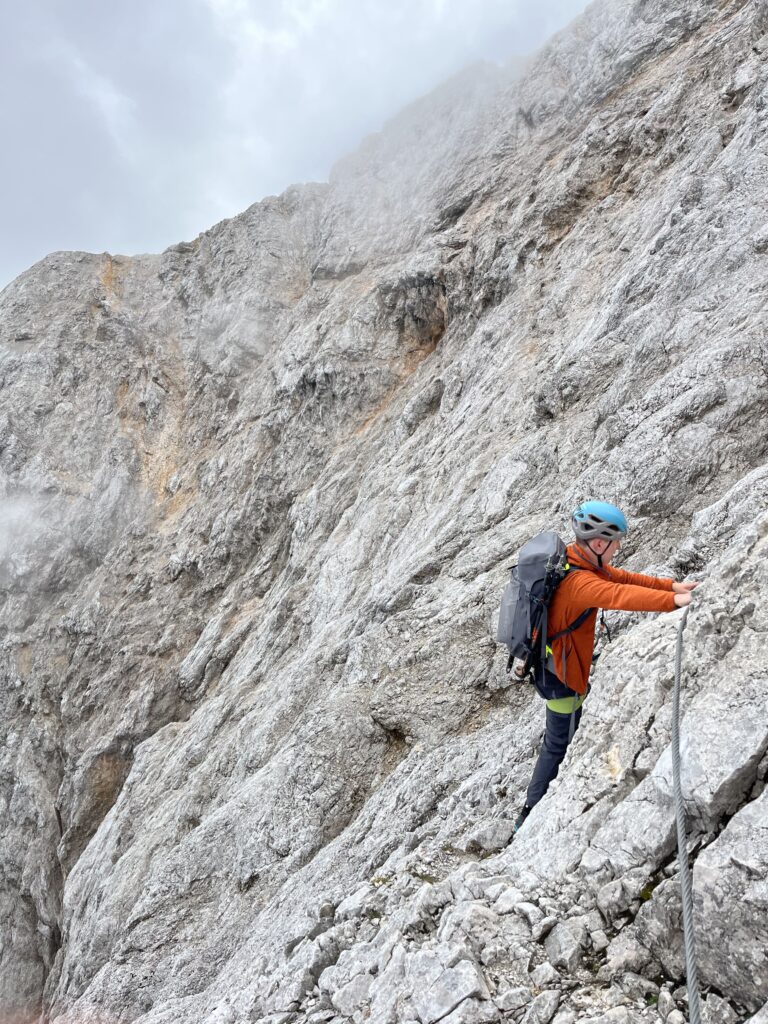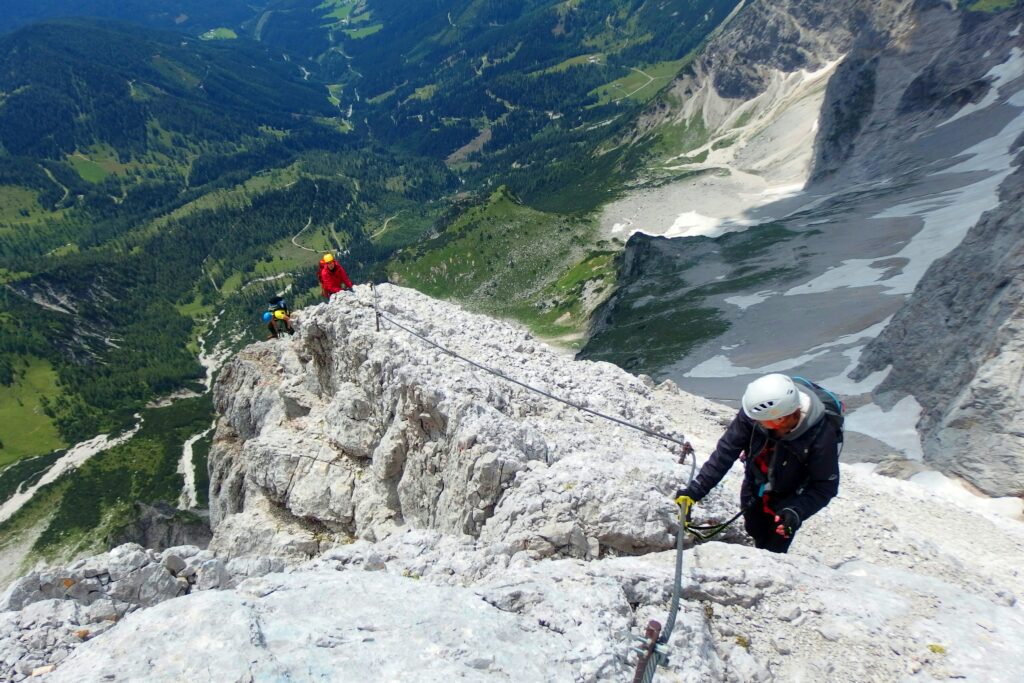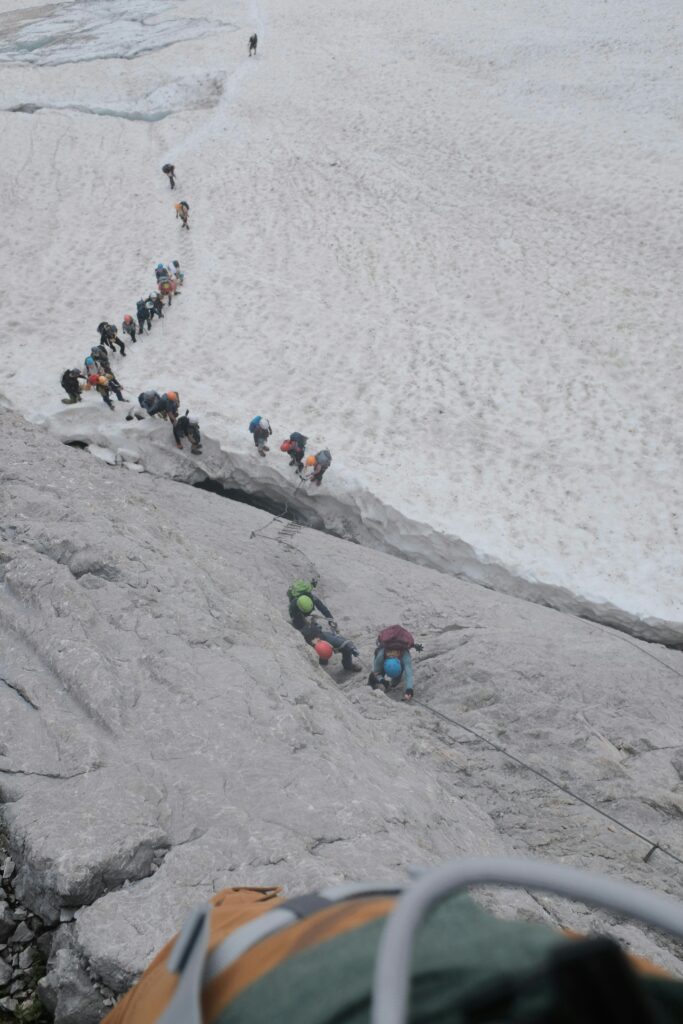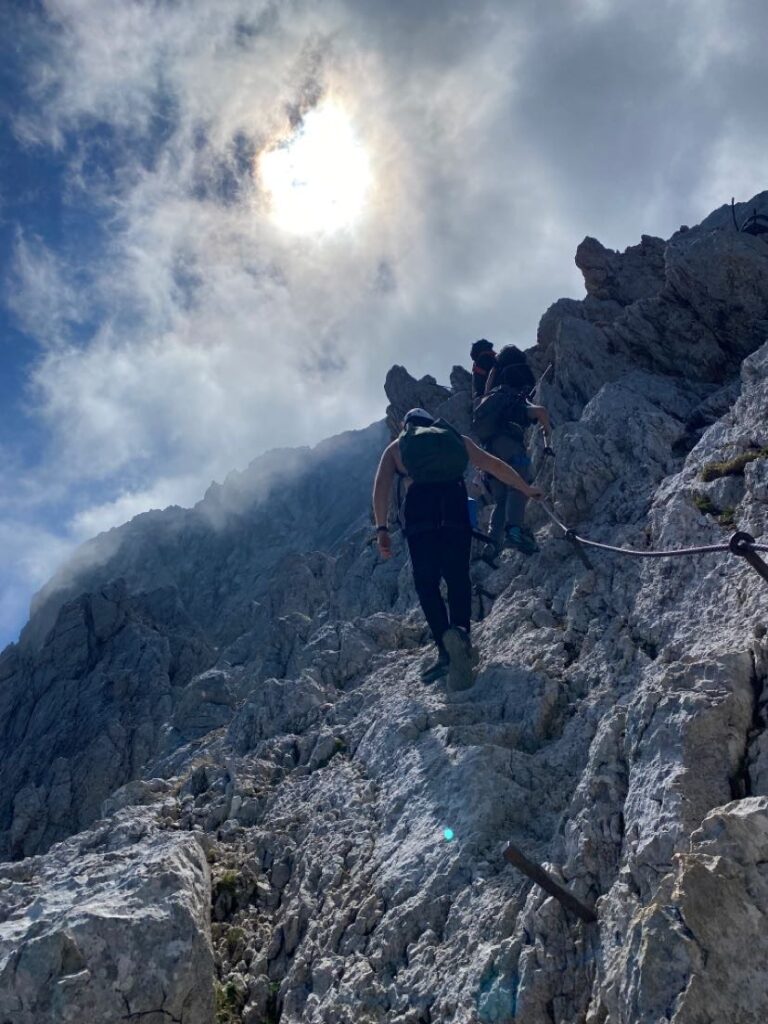
Translated as “Iron Path”
Via Ferratas are a more protected form of rock climbing, typically referred to as “aid climbing”. In steep, vertical faces and mountains, climbers may utilize the various protective equipment drilled and secured into the side of the rock and more easily traverse to the top.
Typically Via Ferrata equipment is fixed protection— meaning they are built to remain on the mountain year round with seasonal upkeep from rangers or mountain guides. The protection will likely include steel cables running the length of the route, iron rungs or steps, ladders and even suspension bridges over especially picturesque areas.

They essentially allow for beginner climbers with little mountaineering experience a chance to ascend a mountain that would otherwise have been too difficult or challenging.
Rather than buy a ton of expensive equipment like normal, they need only buy a harness, helmet and ferrata clips— a purchase that most European stores will sell as a box-set to make it easier.
Ferratas are most popular in Europe as they originated in the Alps during WWI. Military personnel began to look for more clever ways to maneuver behind enemy lines and began to civilize the mountainous terrain as a result, building permanent structures to give any military member the ability to climb without any training.
I had the great pleasure of completing many via ferratas in Europe, these are some of the most enriching and fun experiences one can have.
However, there are a few important things to note before just hopping on.
This is still dangerous
While typically it will depend on the nature of the mountain, not every ferrata is built the same. I went on a few where the cables weren’t even necessary, the mountain was so gradual and easy to climb that I rarely ever clipped in. However, sometimes the terrain becomes so exposed and treacherous that, even with the protection, it still was incredibly dangerous.
For example, while climbing the Zugspitze —the tallest mountain in Germany— there is a section in which there is a 40 yard vertical rope climb. There were no holds or ladders to assist on the way up and, to make things worse, falling would lead to being stuck between the mountain and the glacier.

For anyone expecting an easy climb with a via ferrata, I would advise you to think twice. There are a range of difficulty levels for Ferratas and be sure not to ignore this part when researching your climb.
Where you are matters
Because Via Ferratas really originated in Italy, these routes typically are easier and made for the layman to access. Most other European countries did not adopt protective climbing until much later and, when they did, began to develop the routes for sport rather than necessity. Therefore, France, Germany, Spain, Slovenia and other major nations will typically have shorter routes that are much more intense and challenging, some requiring special training and knowledge beforehand.
While this isn’t always the case, it is something to be mindful about when preparing to step on the mountain as it might have been developed more as a way to test experienced climbers than to help beginners.
Gear
There is a lot of gear out there for the purposes of Via Ferrata and each brand totes its own version of the lanyard and clips.
However, my favorite is definitely the Petzl Scorpio Eashook Lanyard + box set. While a bit more expensive than the typical lanyard, the tradeoff is an easily maneuverable, ergonomic carabiner with a double locking system to allow for better ease of movement without sacrificing security.
It’s super lightweight as well which is a great help to those on long backpacking trips looking to avoid excess weight and compact enough that it does not take too much space.
This lanyard saved my life on a couple occasions so it has my full trust— I could not recommend it enough. From beginner level to seasoned adventurer, this is a quality product.
https://www.petzl.com/US/en/Sport/Lanyards/SCORPIO-EASHOOK
Scrambling is still required
If you are afraid of heights and think a ferrata is going to ease you up the entire way, think again.
Many sections simply end and won’t start again for several feet or yards, leaving one no choice but to scramble precariously to the next cable where they can clip in again. I have been on some gnarly sections where suddenly my lifeline ends and I’m forced to traverse a razor-thin ledge 2000 meters in elevation without any assistance.

Some areas on difficult ferratas can be downright free solos, so do not be surprised if you suddenly find you’re on your own.
Do not forget, you are still on a mountain that does not want you up there. If you fall, there are real consequences. Do not treat it like you would monkey bars on the playground just because it seems to be safe.
As someone who began my climbing journey fairly ignorant of the dangers, these are pieces of advice I wish someone had given to me before starting so I could have a clearer picture of what I was in for. Generally, Via Ferratas are safe and doubly rewarding so long as you stay present and careful.
Follow these tips to do your best on the mountain and keep on summiting.